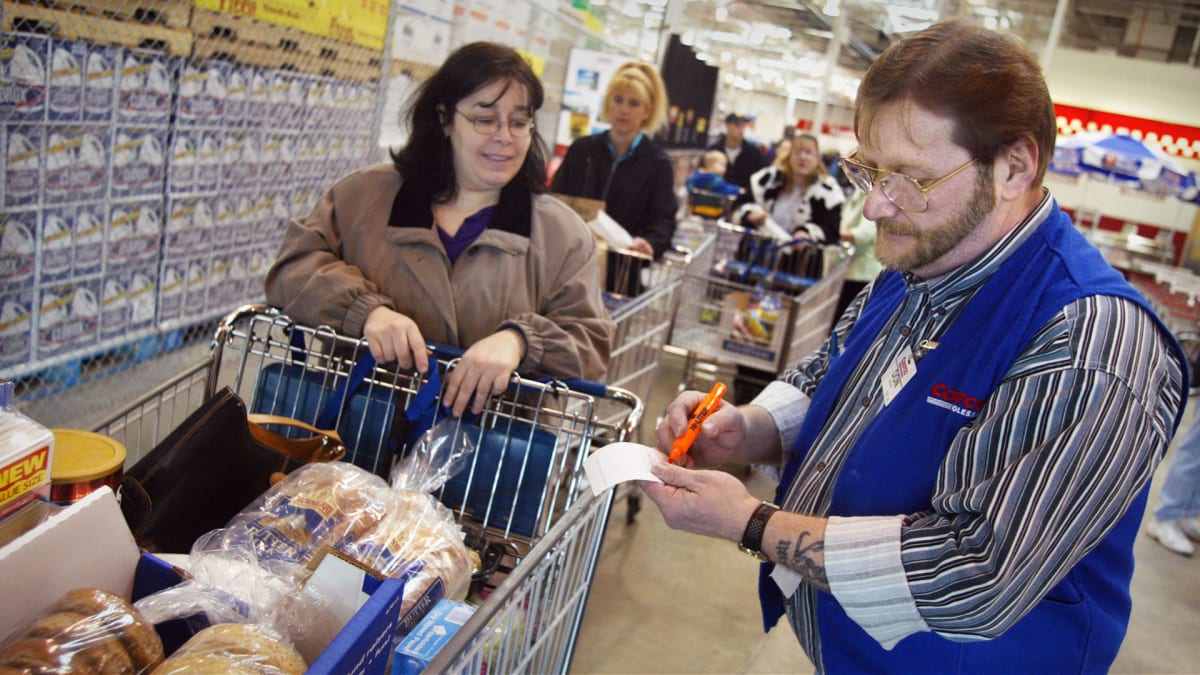
Costco has been a refuge for customers during both the pandemic and during the period when supply chain and inflation issues have driven prices higher. In the worst days of the covid pandemic, the membership-based warehouse club not only had the key household items people needed, it also kept selling them at fair prices.
With inflation -- no matter what the reason for it -- Costco (COST) worked aggressively to keep prices down. During that period (and really always) CFO Richard Galanti talked about how his company leaned on vendors to provide better prices while sometimes also eating some of the increase rather than passing it onto customers.
DON'T MISS: Why You May Not Want to Fly Southwest Airlines
That wasn't an altruistic move. Costco plays the long game, and it focuses on doing whatever is needed to keep its members happy in order to keep them renewing their memberships.
It's a model that has worked spectacularly well, according to Galanti.
"In terms of renewal rates, at third quarter end, our US and Canada renewal rate was 92.6%, and our worldwide rate came in at 90.5%. These figures are the same all-time high renewal rates that were achieved in the second quarter, just 12 weeks ago here," he said during the company's third-quarter earnings call.
Galanti, however, did report some news that suggests that significant problems remain in the economy.

Image source: Xinhua/Ting Shen via Getty Images
Costco Does See Some Economic Weakness
When people worry about the economy, they sometimes trade down when it comes to retailers. Walmart executives (WMT), for example, have talked about seeing more customers that earn six figures shopping in their stores.
Costco has always had a diverse customer base, but one weakness in its business may be a warning sign for its rivals like Target (TGT), Best Buy (BBY), and Amazon (AMZN). Galanti broke down some of the numbers during the call.
"Traffic or shopping frequency remains pretty good, increasing 4.8% worldwide and 3.5% in the U.S. during the quarter," he shared.
People shopped more, but they were also spending less, according to the CFO.
"Our average daily transaction or ticket was down 4.2% worldwide and down 3.5% in the U.S., impacted, in large part, from weakness in bigger-ticket nonfood discretionary items," he shared.
Now, not buying a new TV, jewelry, or other big-ticket items could just be a sign that consumers are being cautious. But, if they're not buying those items at Costco (generally the lowest-cost option) that does not bode well for other retailers.
Galanti laid out the numbers as well as how they broke down between digital and warehouse.
"You saw in the release that e-commerce was a minus 10% sales decline on a comp basis," he said. "As I discussed on our second quarter call and in our monthly sales recordings, in Q3, big-ticket discretionary departments, notably majors, home furnishings, small electrics, jewelry, and hardware, were down about 20% in e-com and made up 55% of e-com sales. These same departments were down about 17% in warehouse, but they only make up 8% in warehouse sales."
Costco's CFO Also Had Good News For Shoppers
Galanti has been very open about sharing information about the prices Costco has seen from vendors. He has shared in the past, for example, that the chain does not pass on gas price increases as fast as they happen nor does it lower prices as quick as they sometimes fall.
In the most recent call, he shared some very good news on inflation (that also puts pressure on Target, Walmart, and Amazon to lower prices).
"A few comments on inflation. Inflation continues to abate somewhat. If you go back a year ago to the fourth quarter of '22 last summer, we had estimated that year-over-year inflation at the time was up 8%. And by Q1 and Q2, it was down to 6% and 7% and then 5% and 6%," he shared. "In this quarter, we're estimating the year-over-year inflation in the 3% to 4% range."
The CFO also explained that he sees prices dropping on some very key consumer staples.
"We continue to see improvements in many items, notably food items like nuts, eggs and meat, as well as items that include, as part of their components, commodities like steel and resins on the nonfood side," he added.







